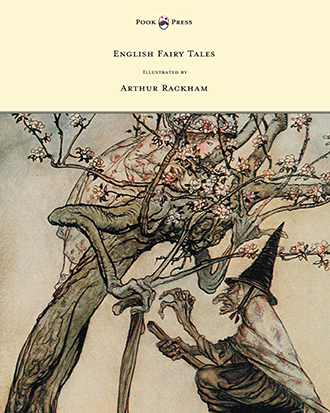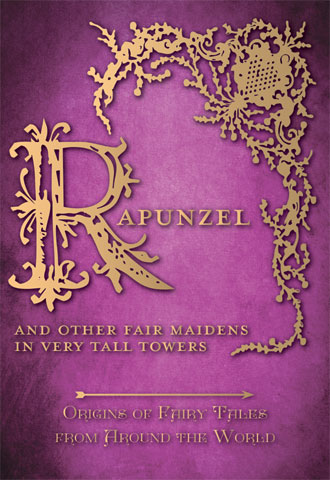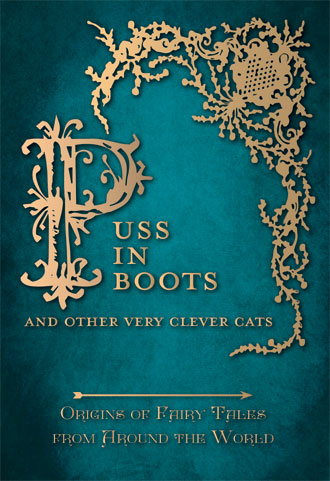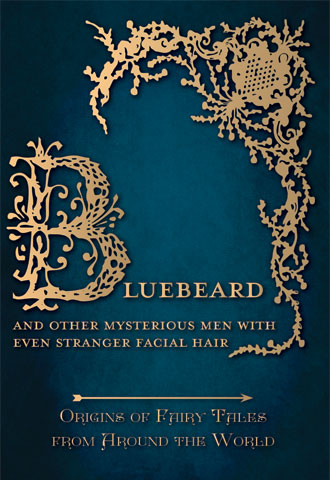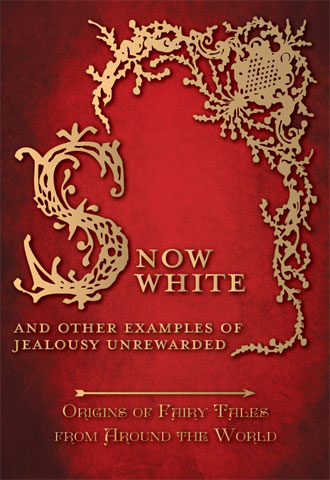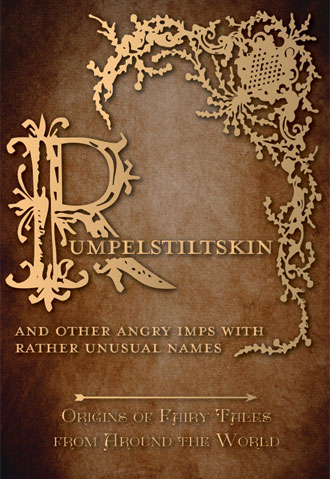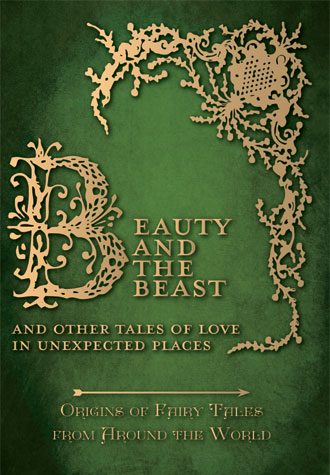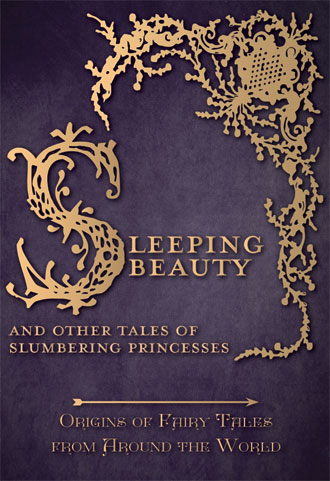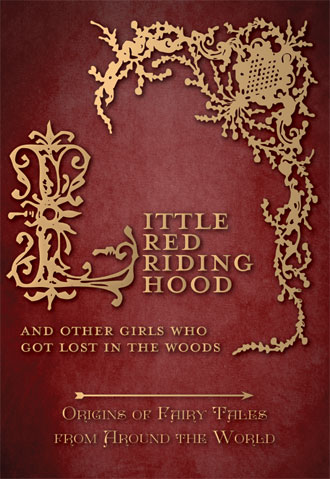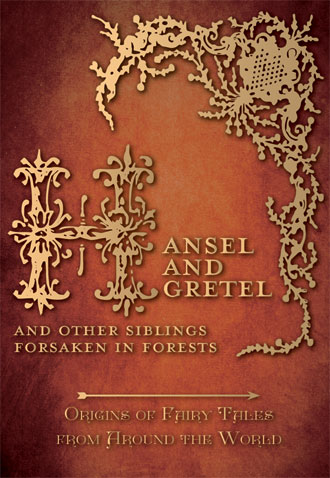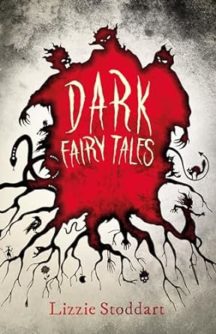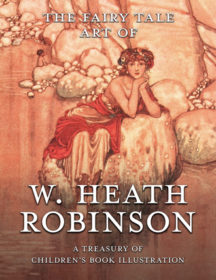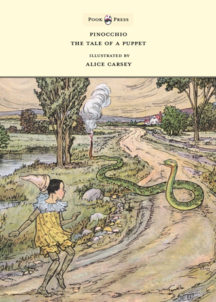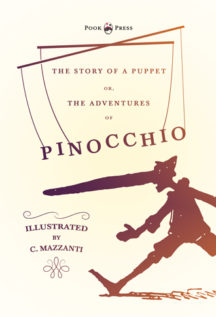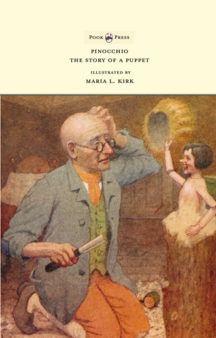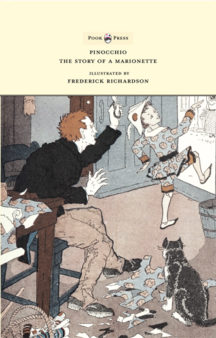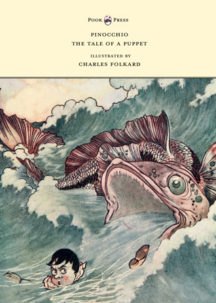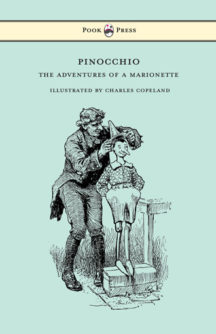St. George and the Dragon – The History of The Golden Legend
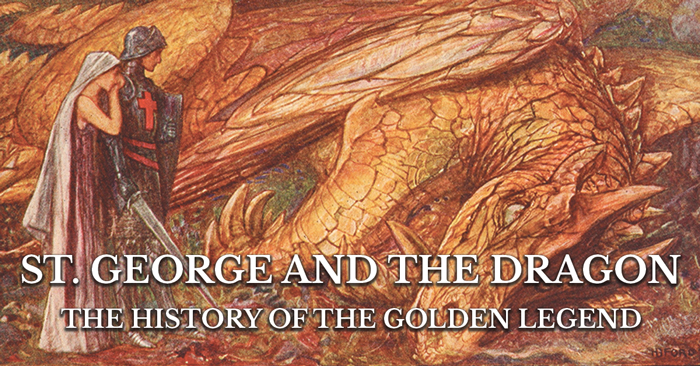
Like many early saints, the exact history of St. George remains a mystery. The most famous story is ‘St. George and The Dragon’, which is said to originate from the 13th-century legend: ‘The Golden Legend‘, where St. George rides into Silene (modern-day Libya) to free the city from a man-eating dragon. The legend has been adapted countlessly over the years and is still enjoyed today. St. George’s Day is annually celebrated in England on the 23rd of April.
We’ve taken a closer look at the history of the ancient story of St. George and the fateful dragon, and the myths surrounding the legend.
‘on his breast was pictured the living image of a dragon, on his right hand was a blood-red cross, and on his left leg showed the golden garter.’
Legend has it that St. George saved a princess from being eaten by a dragon, then tamed and killed the beast. The dragon, who lived in a lake nearby Silene, in Libya, was poisoning the countryside with its venom. In a deal to keep the city safe, the townsfolk offered it two sheep daily to eat, and when they ran out of livestock, they offered their children as a sacrifice. These unfortunate souls were chosen by a lottery, and one day the king’s own daughter was picked. The king offered all of his silver and gold to spare the princess, but the people refused, and so the child was sent out to the lake to be fed to the dragon.
Now, no sooner did the dragon catch sight of the brave Knight than its leathern throat sent out a sound more terrible than thunder, and weltering from its hideous den, it spread its burning wings and prepared to assail its foe.
St. George was travelling through the land and arrived at the lakeside by chance. The princess tried to warn him away, but he refused to leave. When the dragon emerged, St. George charged at it on his horse and seriously wounded the creature with his lance. He attached his girdle around the beast’s neck and led the dragon back to the city, with the princess safe by his side. He offered to kill the dragon if the people of the town consented to become Christians. It’s said that over 10,000 people, including the king, converted to Christianity, and so St. George beheaded the dragon with his sword. The king of Silene built a church on the spot where the dragon was killed, and a spring flowed from its altar with water that cured all disease.
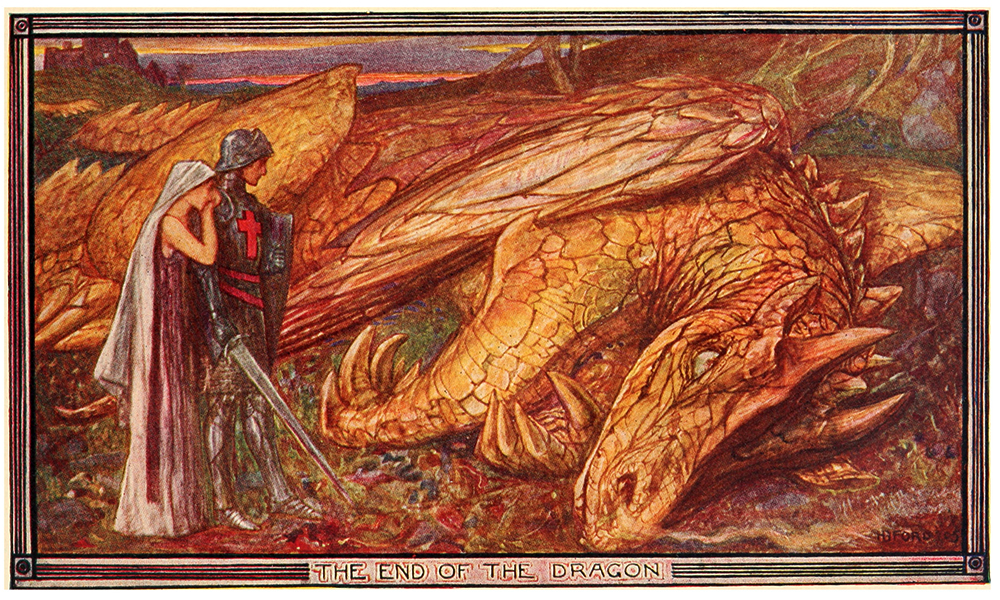
The End of the Dragon – Illustration by H. J. Ford
This story, known as the Golden Legend, first appeared in Jacobus da Varagine’s Legenda Aurea in the 1260s. Varagine’s collection of saintly biographies was widely read in late medieval Europe, with around 1000 manuscripts still around today. The narrative of the legend has pre-protestant origins and was first attributed to a different saint named Theodore of Amasea – a warrior saint and great martyr of the Orthodox and Roman Catholic Churches – before it was transferred to St. George in the 13th century. The story and iconography of St. George and the dragon were widely spread through Western culture via the crusades: a series of religious wars between the 11th and 13th centuries. The story was popularised by the 13th century and has become an integral part of Christian traditions relating to St. George.
The legacy of St. George and the dragon has lived on through the centuries, being adapted and embellished along the way, to the well-known legend that we know today. It makes an appearance in Shakespearean plays: Richard III, King Lear and also Henry V, in the famous speech ‘Once more unto the breach, dear friends’. It was adapted into ballad form by Edward Elgar in 1879, and also re-written as a chapter in a children’s book called The Reluctant Dragon by Wind in the Willows author Kenneth Grahame, where an elderly St. George and kindly dragon stage a mock battle to please the townsfolk and introduce the dragon into society. It continues to be adapted throughout modern culture with the latest version appearing in the form of a feminist retelling The Priory of the Orange Tree, 2019, by Samantha Shannon. It is a standalone fantasy novel in which the human world is about to go to war with dragons. The women are the heroes of this powerful tale of magic and strength.
* * * * *
Discover the full story of St. George of Merrie England in English Fairy Tales – collected and adapted by Flora Annie Stee, and illustrated by Arthur Rackham
English Fairy Tales – Illustrated by Arthur Rackham
This wonderful book of English Fairy Tales was collected and adapted by Flora Annie Steel in 1918. It includes the tales ‘Tom-Tit-Tot’, ‘Jack the Giant Killer’, ‘Tattercoats’, ‘Jack and the Beanstalk’, ‘Catskin’, ‘The Three Little Pigs’, ‘Dick Whittington and his Cat’, ‘The Little Red Riding Hood’, ‘Babes in the Wood’ and many more.
More books on the origins of fairy tales:

